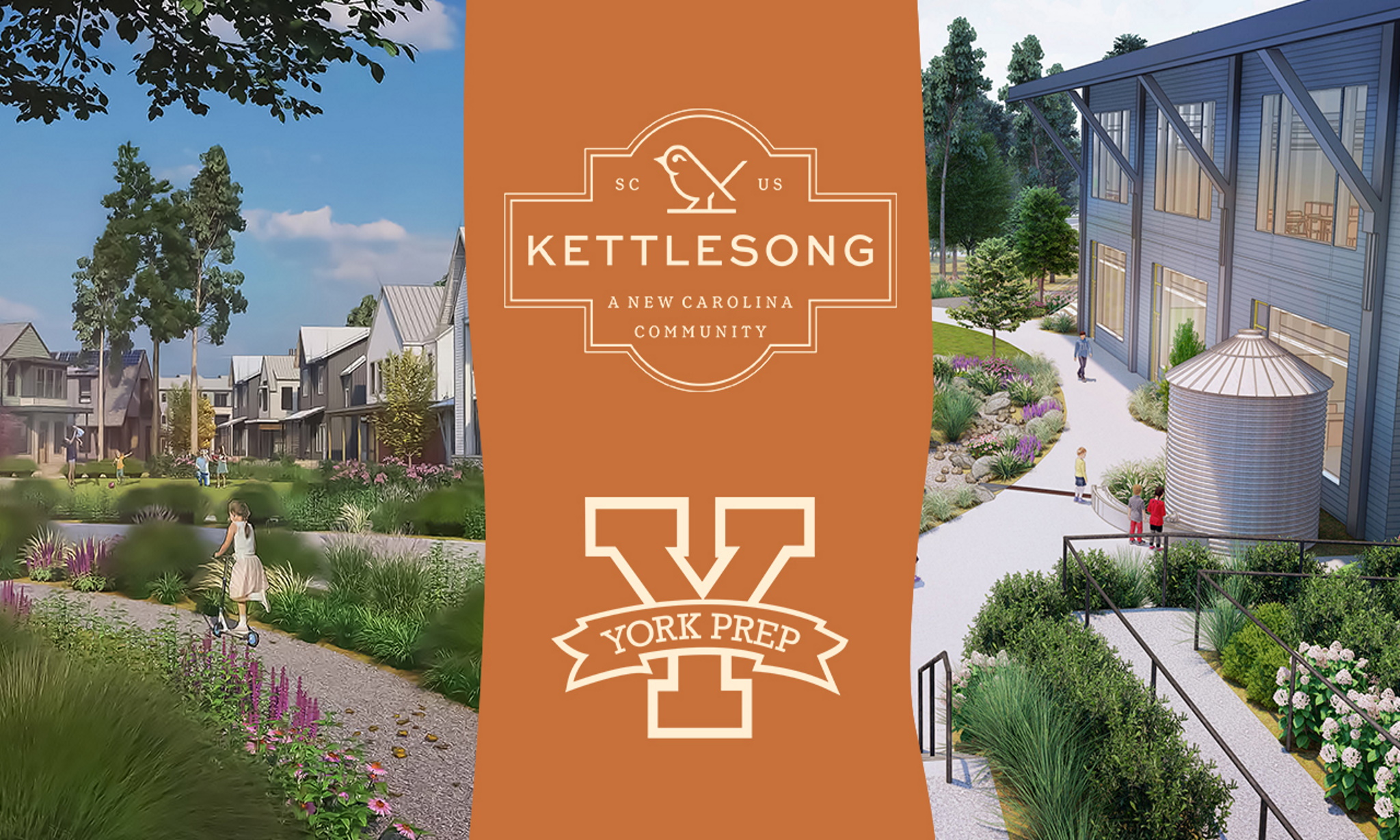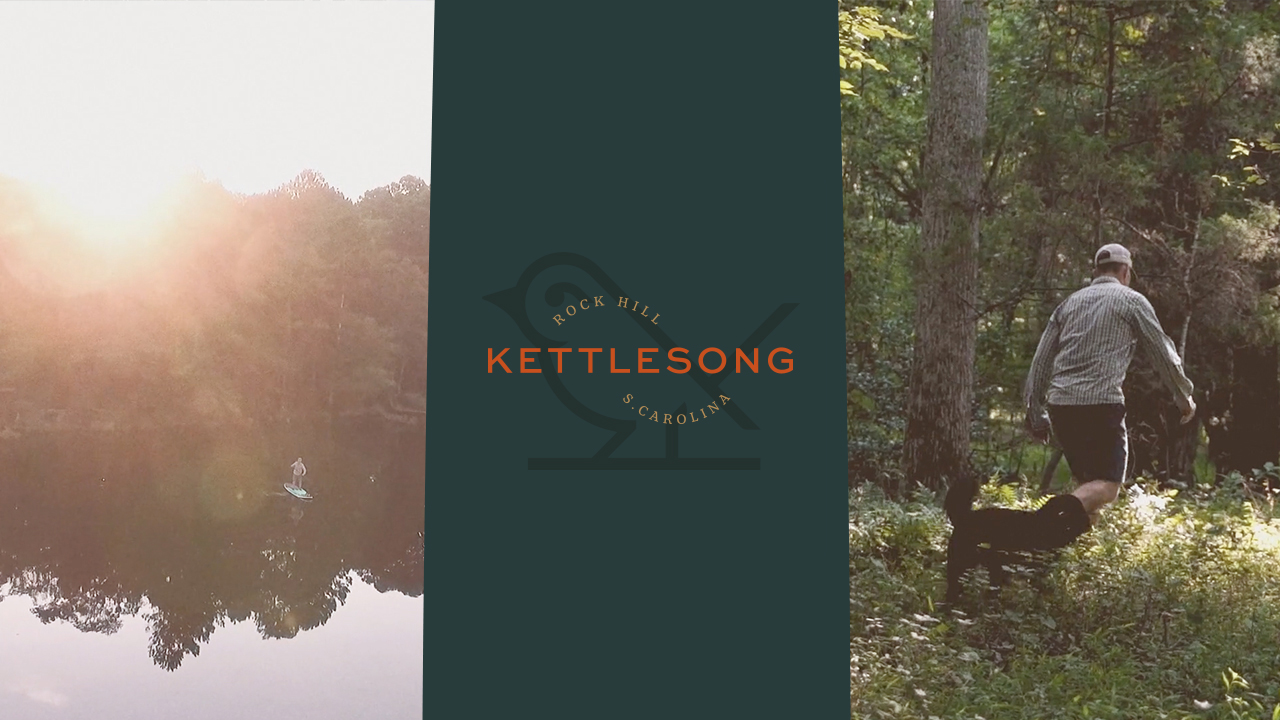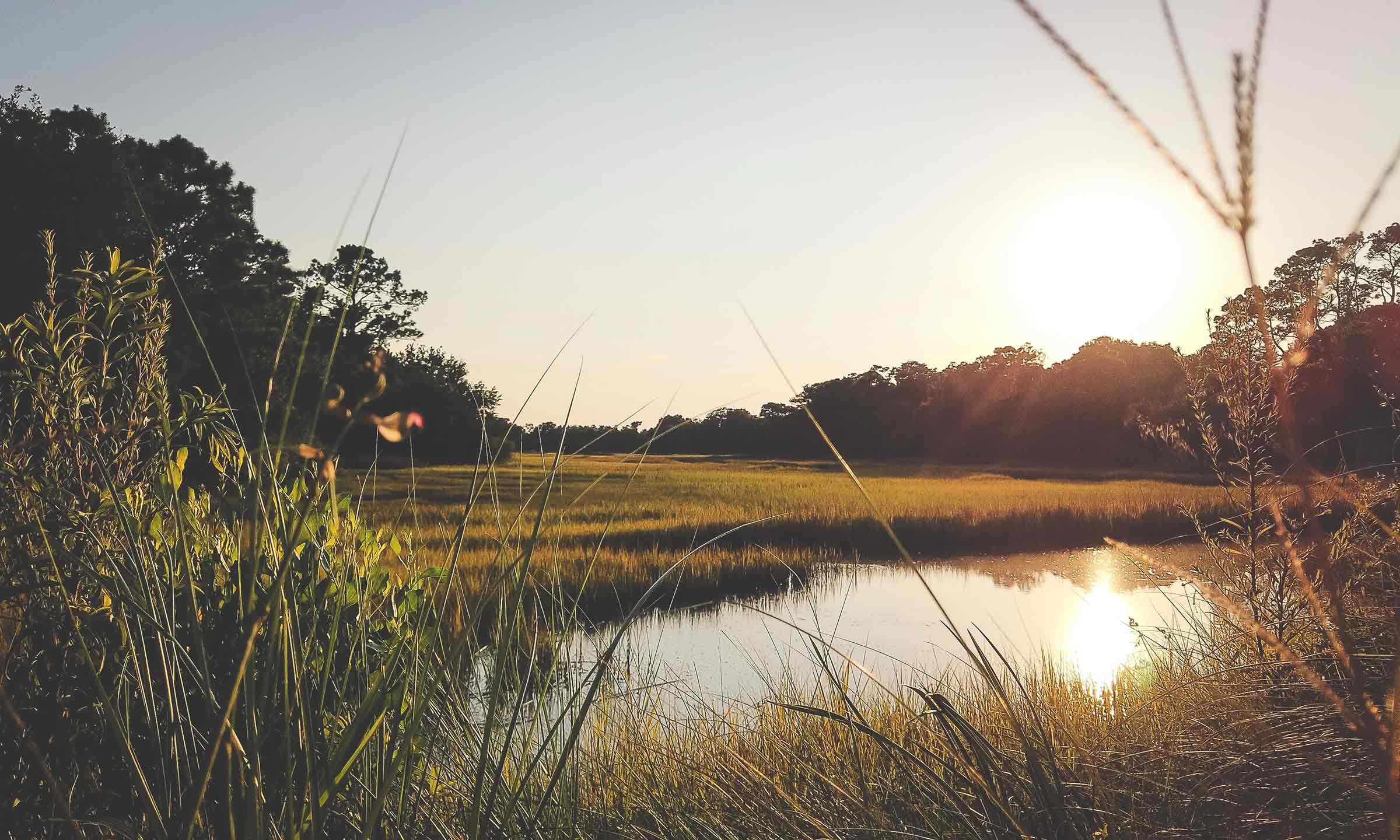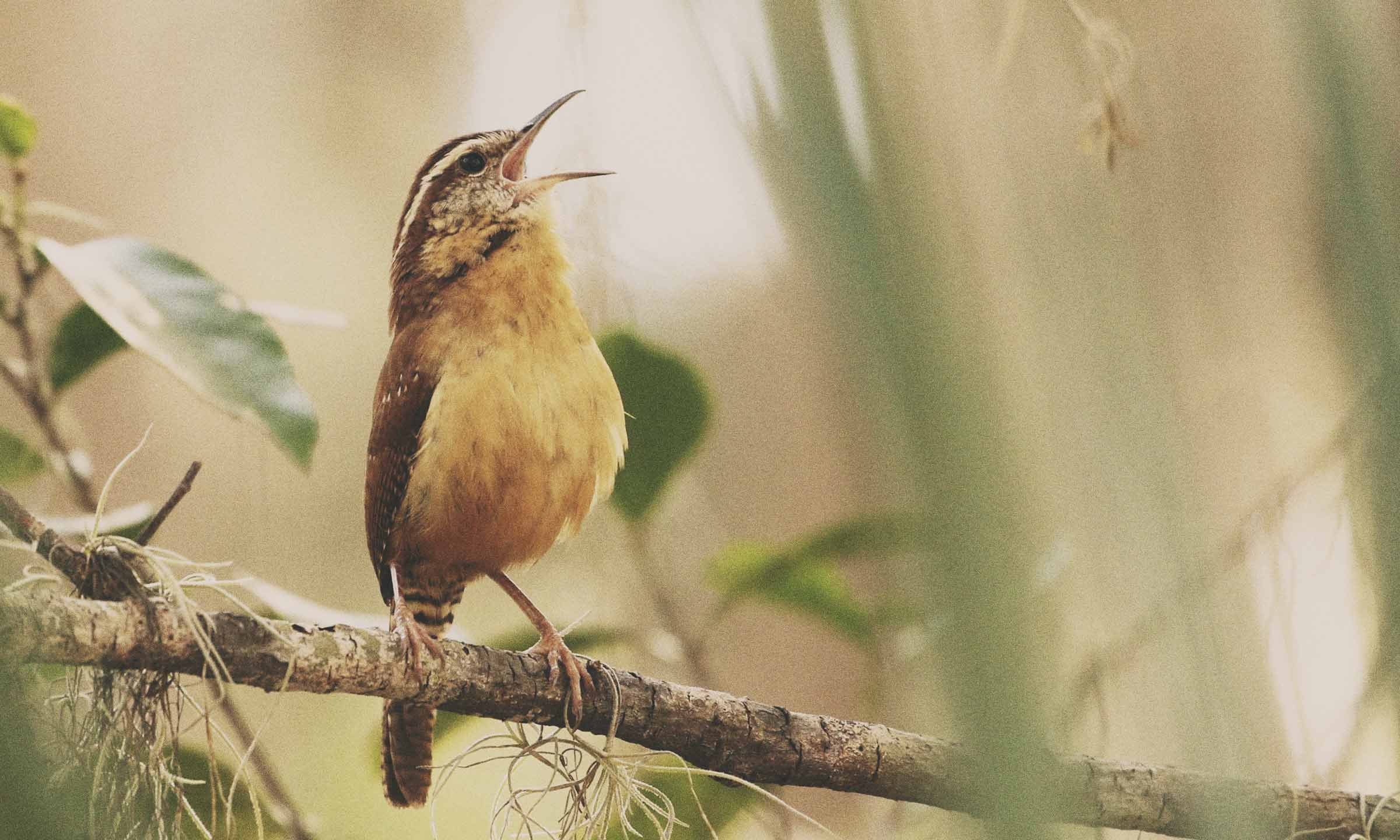This past Monday, Nik and Craig had the opportunity to talk with Manning Kimmel for Straight Talk on WRHI. In this in-depth interview, they talk about their backgrounds, what led them to the Rock Hill area, and their vision for Kettlesong and the entire area. Listen to the interview below or on the WRHI website.
One of the main features at Kettlesong will be a branch of York Preparatory Academy (a K-8 public charter school) that uses a ‘Place-Based’ curriculum to immerse kids in local heritage, landscapes, opportunities and experiences, using these as a foundation for learning.
Kettlesong is a nature-themed, mixed-use development just south of Rock Hill, SC. Some people have jokingly said, "You guys are building a park that people can live in," and that's actually a pretty good description of what we're trying to do. In this video, Nik and Craig talk about our vision to keep this area rural and beautiful.
In terms of planning there are still many things that need to be sorted, and we know the best decisions will come by incorporating insight from many perspectives. In addition to in person meetings and forums, we will send out quick surveys on specific topics. While we won’t be designing by committee, we will be mindful and thoughtful in every facet of this community.
To get this effort started, we want to know your thoughts on trails.
Please take 4 minutes and tell us how to take a hike.
An introduction is probably in order. I’m Nik Radovanovic a partner of Indigo Rush- the company formed to make Kettlesong happen. I was born in the foothills of the Smoky Mountains of Tennessee, raised on New York’s Long Island, spent some time in Florida and for the last +/- 15 years have been living in Fort Mill, SC. I’m what some would call a ‘halfback’. Maybe not, because in terms of geography and culture I’m pretty much back where I started.
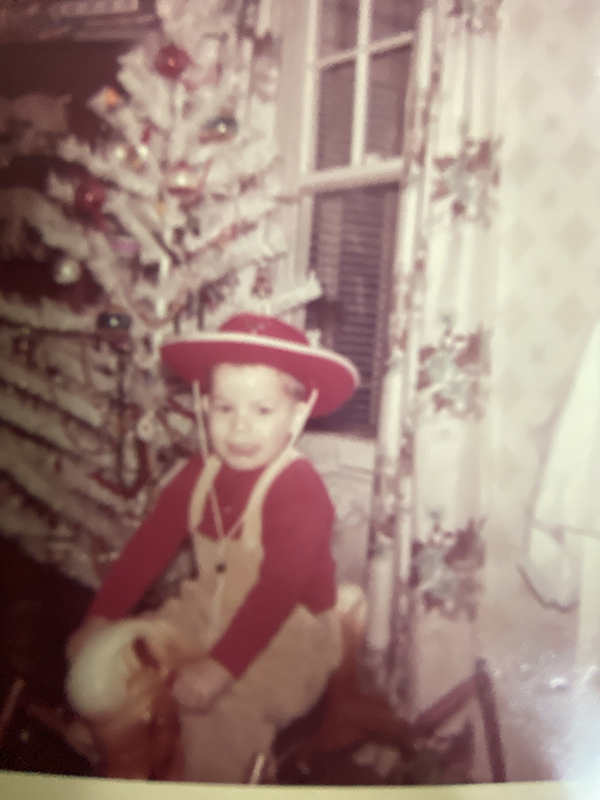
I’m married, have two boys, and provide free room and board to an assortment of domesticated animals. My professional trajectory has been—well, unconventional. I’ve traveled as a merchant marine and sat on a foreign equity desk before settling on the building trades as an architect, builder and community planner. I have pretty eclectic tastes in music and food, regularly tempt fate on my mountain bike, and much to the confusion and general discomfort of family, friends and strangers, have been known to breakout into song when the mood strikes me.
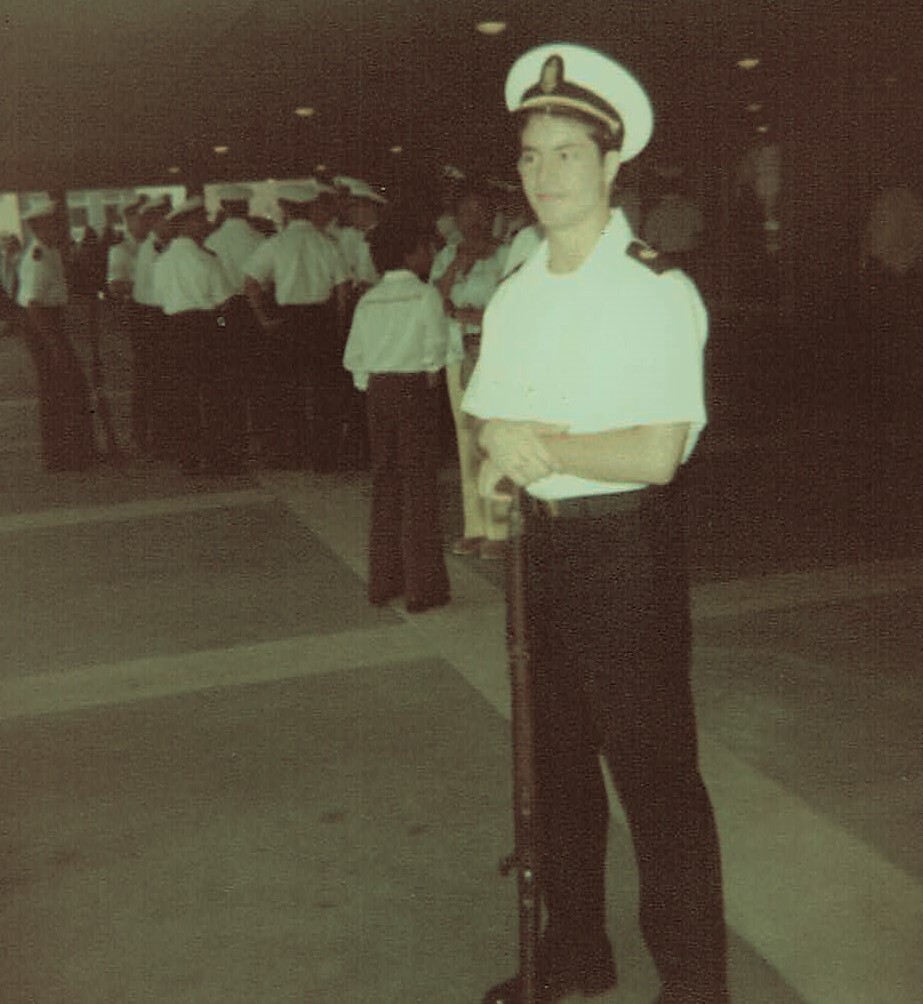
As you may have guessed, I’m not a linear thinker and so I do have my share of errant thoughts but there are some that have lingered long enough to be considered beliefs. Belief is a funny thing. I say that because it’s conveyed a kind of superpower to me. I’m not talking about x-ray vision or invisibility, although I could see them coming in pretty handy in a pinch. What I’m talking about is courage. The kind of courage that allows me to believe in something that other folks say is not worth the trouble. A belief in exceptions to the rule. Kettlesong is one of those exceptional things.
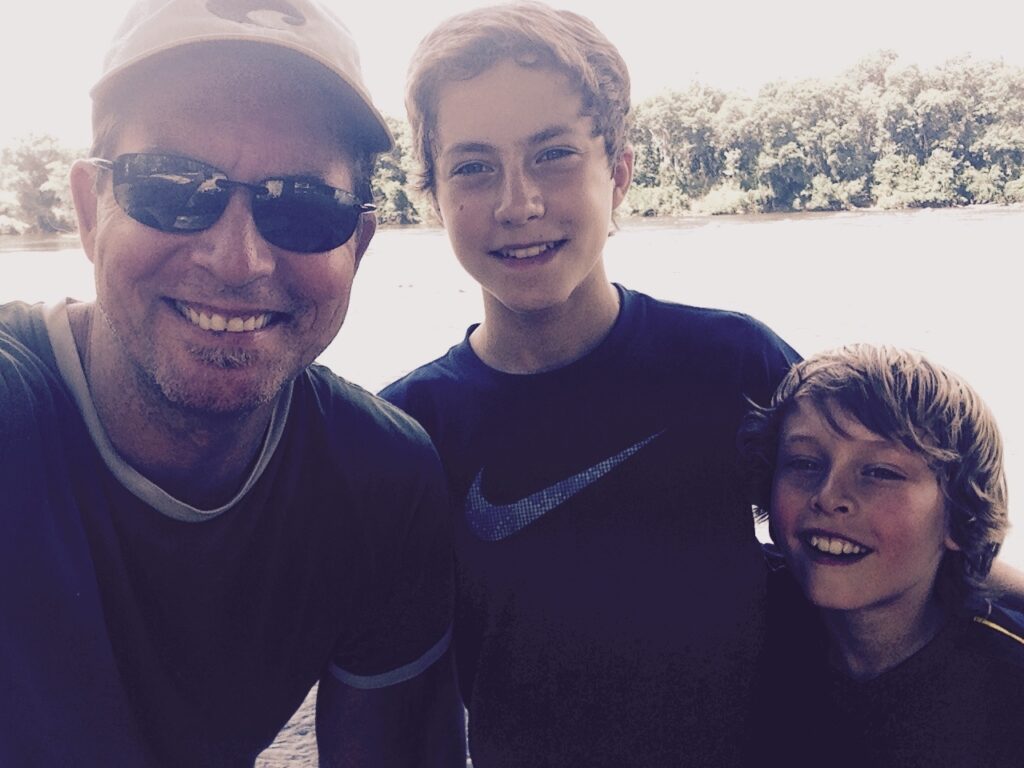
That same voice reminds me that with just the right mix of ingredients and a little luck we’ll be able to create a place that brings people together and becomes an example of a better way to live. Creating stronger connections between people and the land itself. Our goal is to establish a new standard for community development in our area so that Kettlesong is no longer thought of as exceptional but instead—becomes just another ‘common place’.
Closer communities with more green in between.
The path to a better world begins in our own backyard. Everyone loves strong economic development. It’s good for communities, and good for the people in those communities. But this growth comes with a price. As cities and towns increase and prosper, they need schools, offices, retail, and roads for residents. Providing these things usually means sacrificing natural areas. Sure, a few trees might be saved when clearing land for new development, but most will be gone. Forever. Replaced with asphalt and concrete. It’s an unnatural pattern that continues to repeat itself all across America. It’s a pattern we want to change.
Anyone who lives in the upstate of SC would agree—it’s beautiful here. It’s beautiful because of our natural resources. From our creeks and rivers to our forests and meadows, we’re lucky to call this part of the country home. It just feels good here. Natural. But change is coming. Our region is growing. Fast. And when cities like Charlotte grow, more asphalt is laid, and more natural areas vanish.
With Kettlesong we're out to prove there's a better way. A way that protects what is beautiful and wild in our part of the country and provides a place to call home. Rather than waiting to be overrun by sprawl, what if we created compact home places where people are connected to nature? We think Kettlesong can be that place. Surrounded by preserved forest and farmland, with schools, stores and neighbors all within walking distance. You can still drive your car but it may just feel -- unnecessary. We imagine more hamlets and townships tucked into the woods of York and Chester counties, woven together with lots of conservation areas of woodlands and family homesteads. This is how we meet the demands of growth while protecting our character and our way of life. But here's the thing- we need to act now!
Kettlesong isn’t the first to do this, it’s happening all over America. Some call it new urbanism or traditional neighborhood design. It’s not an experiment, it’s a proactive and thoughtful approach to stave off suburban sprawl and keep our area beautiful and real.
We’re actively working with local municipalities and conservation groups to establish a regional greenway system that would save natural habitats and cultivate complete pedestrian-oriented communities. Communities with bike trails and running paths, nestled in natural surroundings and connecting us to all the goodness mother nature has to offer. Communities, that are welcoming to business and have schools that you can walk to, all powered with new technologies. Whole communities.
This is a bold approach to guiding future development in a way that both embraces new economic opportunities and celebrates our pristine natural wonderland. We believe that through sensitive land conservation, and connecting people to one another, we can leave this a place better than we found it, for our children, and their children’s children. We live here and we want to keep what we have and make it better. We can do that by committing to a strategy of smart growth.
“The long day wanes. The slow moon climbs. The deep moans round with many voices. Come, my friends. ‘Tis not too late to seek a newer world.”
—Alfred Lord Tennyson
More than 70 years ago, Vernon Grant started a farm on the gently rolling land that will soon be Kettlesong. Though he felt like a son of the soil at heart, he wasn’t your typical farmer. Now a legend of the York County community, Vernon was born with an equal love for the land beneath his feet and the vivid colors of his imagination.
In the first half of his life, Vernon turned his childhood love of drawing into a successful career as one of America’s top illustrators. His work appeared on the covers of magazines, on advertisements and products, and in numerous children’s books. During the “Golden Age of Illustration” in the 30’s and 40’s, he created beloved characters like Kellogg’s Snap! Crackle! Pop!™ and was ranked "America's favorite children's artist” by LIFE magazine in 1938.
With a flair for color, fairy-tales and friendship, he saw the world with bright eyes, continually finding inspiration in the people and places around him. He made endearing characters from the animals that played with him by the river. He made gnomes dressed in the same patchwork hand-me-downs he wore growing up in South Dakota. He made dreams come alive in the minds of children as they poured over the pages of his books, following the story’s trail into playful new worlds. He made friends in LA, Chicago, and New York, welcoming them with his warmth and storytelling, and made his neighbors tap their feet to the sound of his banjo.
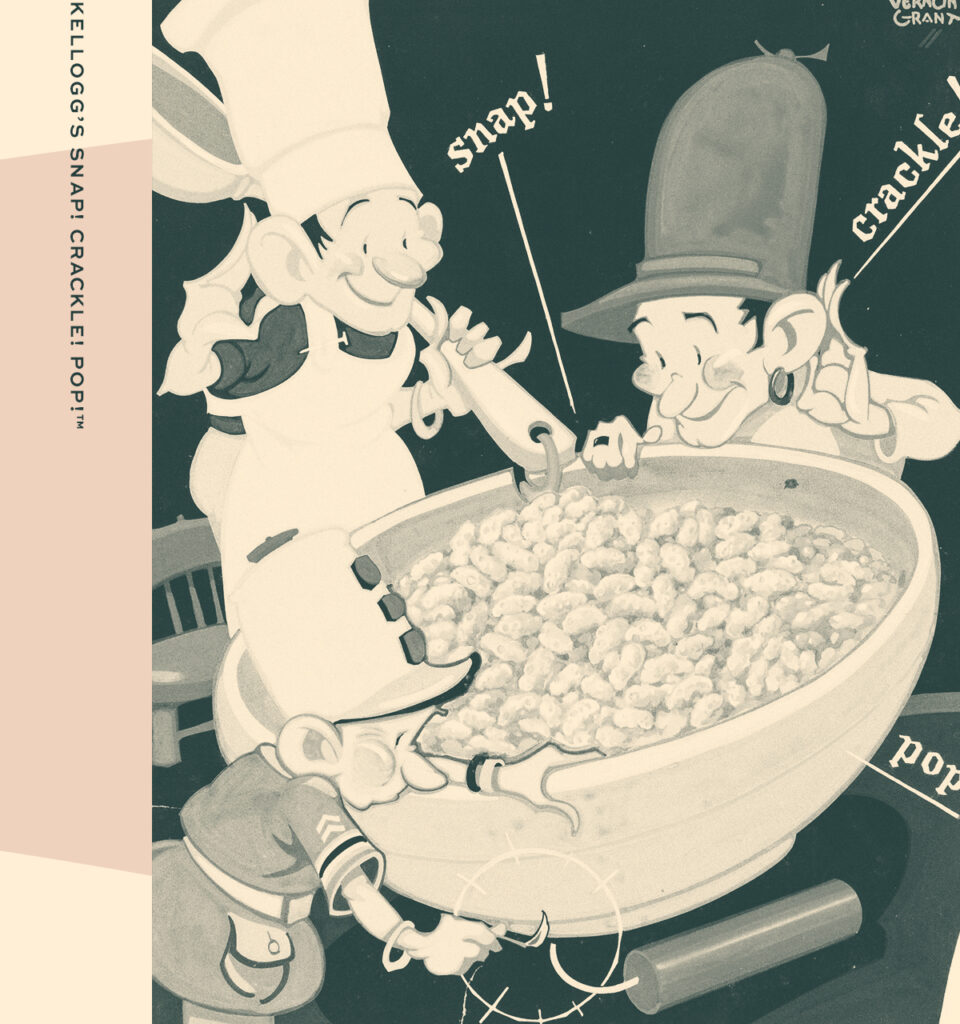
But it wasn’t until 1947, when Vernon moved from New York City to the verdant hills of his wife’s family farm in York County that he made roots, roots that grew from 200 to 670 acres, roots filled with ingenuity and reverence for the community surrounding him. He always felt a hankering to make a mark on the world, to bravely follow his creativity wherever it might lead. As he explored the lush landscape stretched out before him at a farm he named Pinetuck, his hankering found a home.
Even though he was new to South Carolina and to running his own farm, it still felt like a return. A return to the good earth, to open skies and to the possibility of adventure. Raised on big sky prairies north of the Black Hills in South Dakota, Vernon learned that home was a place you built for and with the people around you. Growing up miles from a town, or even a store, his family made everything they wanted themselves and relied on the help of their neighbors. They worked together to build their own homes and a one-room schoolhouse. They enriched their simple, hard-working life with music, humor, storytelling and art.
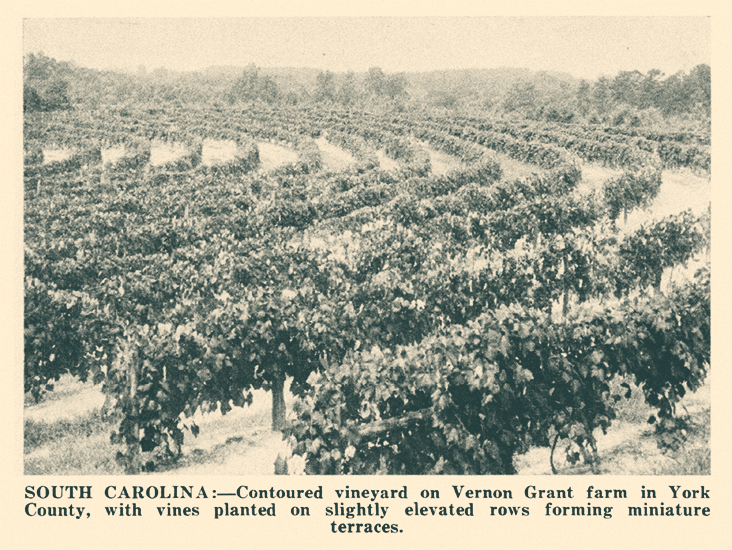
At his new Carolina homestead, Vernon dug deep with the same nourishing mix of heart, hard work and creativity. He brought with him his loyalty to nature, his vision and optimism, and his generous spirit of community. As a result, York County welcomed him with pride and open arms.
Instead of making toys out of clay soil by the creekside as he did as a child, he raised cattle and plump concord grapes, fescue and lespedeza seed by the ton. He tended the land with innovative conservation and farming methods. He continued illustrating but in addition to magazines and ads, he gifted his art to the community in hand drawn Christmas cards and festival mascots. and a Main Street children’s museum filled with playful whimsy.
As his closeness to the community grew, his life ripened with age into something even more enduring, grounded in the desire to make a difference. Active in farming organizations, the Rock Hill Housing Authority, Urban Renewal programs, and the Chamber of Commerce, he was a force of renewal. Real renewal. The kind that enhances quality of life and lifts nature up, appreciating the beauty of things not organized in perfect rows. He believed there were no boundaries between urban life and rural life, for one could find beauty and meaning in the kinds of connections that sustain them both.
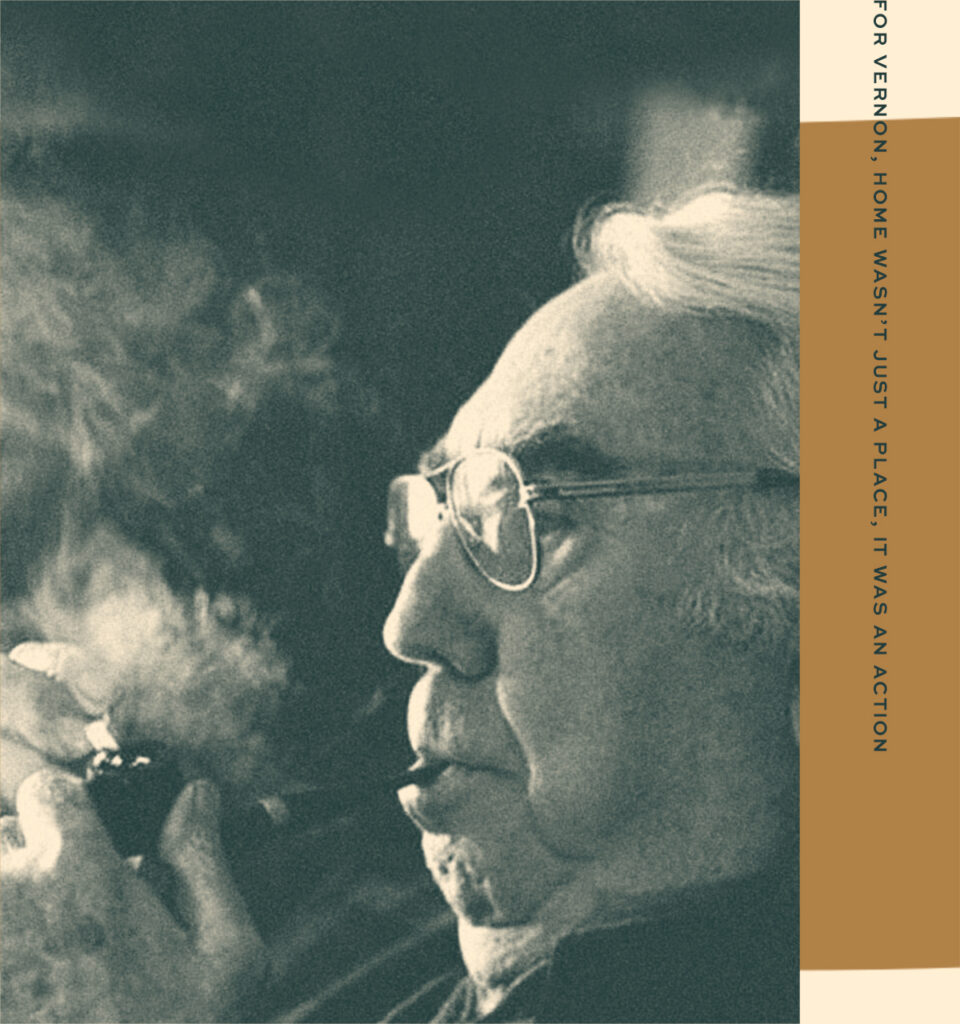
For Vernon, home wasn’t just a place, it was an action, a gesture of creativity and care. He had the capacity for seeing anew the beauty in our daily lives, in the ways we make life bright with cheer and commitment when we connect with the land beneath our feet and the people next to us.
The legacy Vernon Grant bestowed on York County is a simple one, but it’s not ordinary. It’s the legacy of a joy-filled life and a spirit that made everything feel like home. Like Vernon, Kettlesong believes the feeling of home takes many forms, and nowhere is it more strongly felt than in appreciation for nature and community.
Kettlesong hopes to continue Vernon’s legacy by renewing the heritage of what he loved, recreating on a stretch of land that was the Grant farm, a new home place filled with bright landscapes, new opportunities and meaningful experiences.
If we haven’t met already, let me introduce myself. My name is Craig Craze. My wife and I have four children, all born and raised in Rock Hill. Our family home is a stone’s throw from Kettlesong.
I was born and grew up in Charlotte. While Tiffany is from Idaho, she has embraced the South and raised well-mannered Southerners. (You say “No, sir” and “Yes, ma’am.” Men open doors for women. Don’t be rude by blowing your car horn—simply toot it. Wave to acknowledge people.)
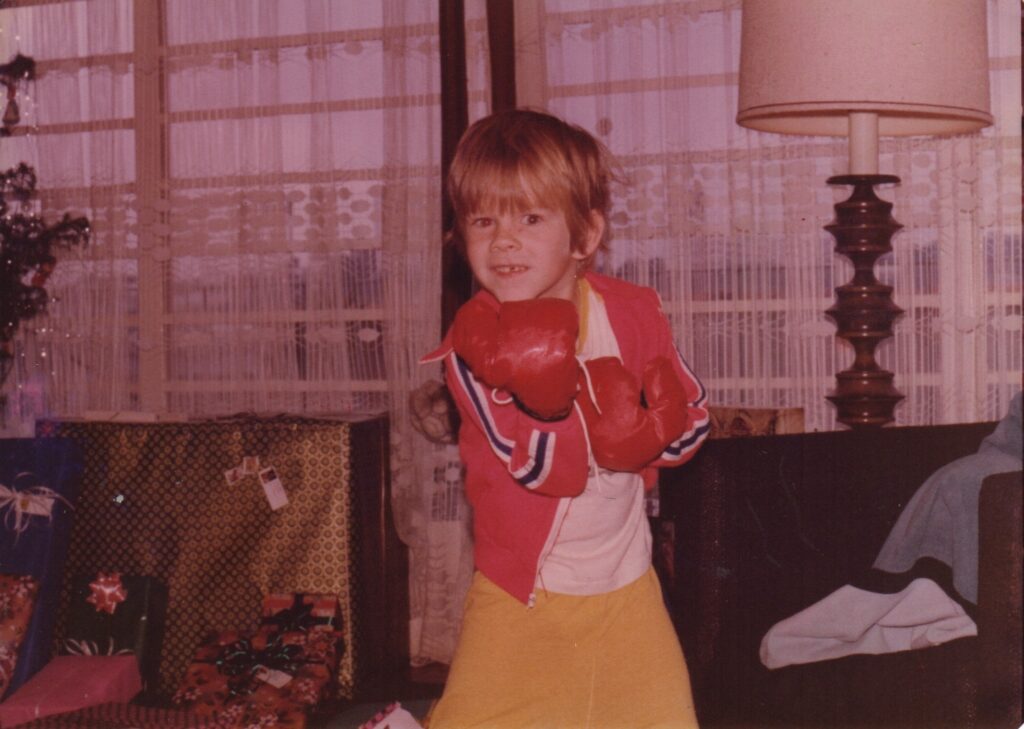
From a work perspective, I have been fortunate to enjoy three professions. I practiced public relations in Kuala Lumpur, Malaysia, and New York City before coming to Rock Hill in the late ’90s. In Rock Hill, I started a custom audio/video and home automation business. That small business was acquired and merged into a larger company that has evolved to become the dominant supplier for the industry. I did not do it alone. I had great business partners. We eventually sold the business and I concluded my serve as CEO in 2015.
At that point in my life, I found myself wondering: What next? What will give me a sense of fulfillment? What will bring joy?
I believe most people instinctively seek for a life of joy. I am not talking about short-lived pleasures like a cool piece of watermelon on a hot summer day or a cup of hot chocolate on a frosty morning. I am talking about deep, long-lasting joy that comes from experiences and relationships. But sources of that joy are often illusive.

It took me 46 years to recognize one of my sources. Said concisely: I love building places that give people joy.
For my wife, it was a family home. For one daughter it was a greenhouse where she spends hours tending to her plants. For another daughter it was a zip line that enables her to fly effortlessly through the treetops.
The recognition of this source of joy, coupled with growing concern about the inevitable development that is coming, led me to form a partnership—Indigo Rush—with Nik. He and I both know that if development is purely driven by profit, and there is no vision for the greater good, then the change is likely to be what we fear. So we began working to create a vision. A vision that enables us to preserve what we love while allowing for growth. A central part of that vision is Kettlesong.
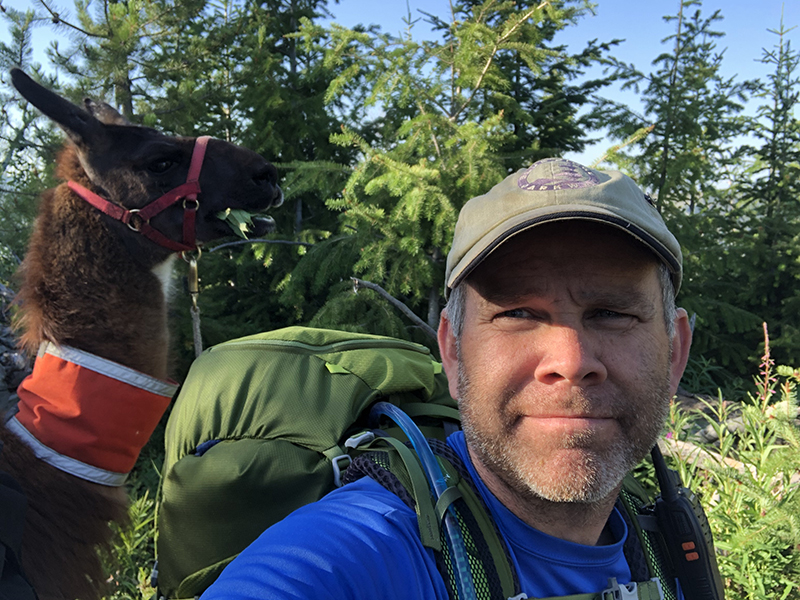
Kettlesong is children discovering creeks and playing in parks. Neighbors feeling safe because they know and talk with one another. Community members having a sense of belonging because they contribute and share. Kettlesong gives place to these experiences and relationships that can be profound sources of joy. That is a vision worth working toward.
In our earliest days of dreaming about what a community nestled in the rolling hills of York County could be, one thing we knew for certain was that it needed strong roots to become the haven we envisioned. As folks who had built our homes, families, and careers in the South Carolina upcountry, we had become well acquainted with the good life—connection to one another, to nature and to the hope of understanding that we shape tomorrow by how we live today. Though we had conviction in our vision, the question remained: how do we encapsulate, even replicate, that good life in deep and true ways?
We spent months pondering what to call a place that was already so precious to us, and would become precious to others for centuries to come. A community with strong roots needed a name that was deeply rooted too, so we poured through historical documents, harkened to local lore, and spent time wandering through meadows and listening to the melodies that streamed from the forest.
If you've spent time in the South Carolina upcountry, there's a clarion all too familiar that echoes across streams and through Elms and Hollywilds. "Tea kettle, tea kettle," it trills. It's the song of the Carolina Wren, our state bird. These happy little creatures employ this song all year long, day and night, through all forms of weather. It's their way of letting all creation know, “This is our home.”
We knew this agrestal song was one worth sharing. But it wasn't just the melody of the Carolina Wren, it was also the whistle of a household staple, the kettle itself whose pitch reminds us that the time is now, that we are ready—that life is full of sustenance to be celebrated. The song of the kettle, whether whistled in steam or rang out through treetops, calls us to gather. It calls us home.
After countless hours, conversations on long country drives, and middle-of-the-night note scribbling, we realized that our name had existed all along. In our nature, in our history, in the air we breathed. Kettlesong: Home is Calling.

